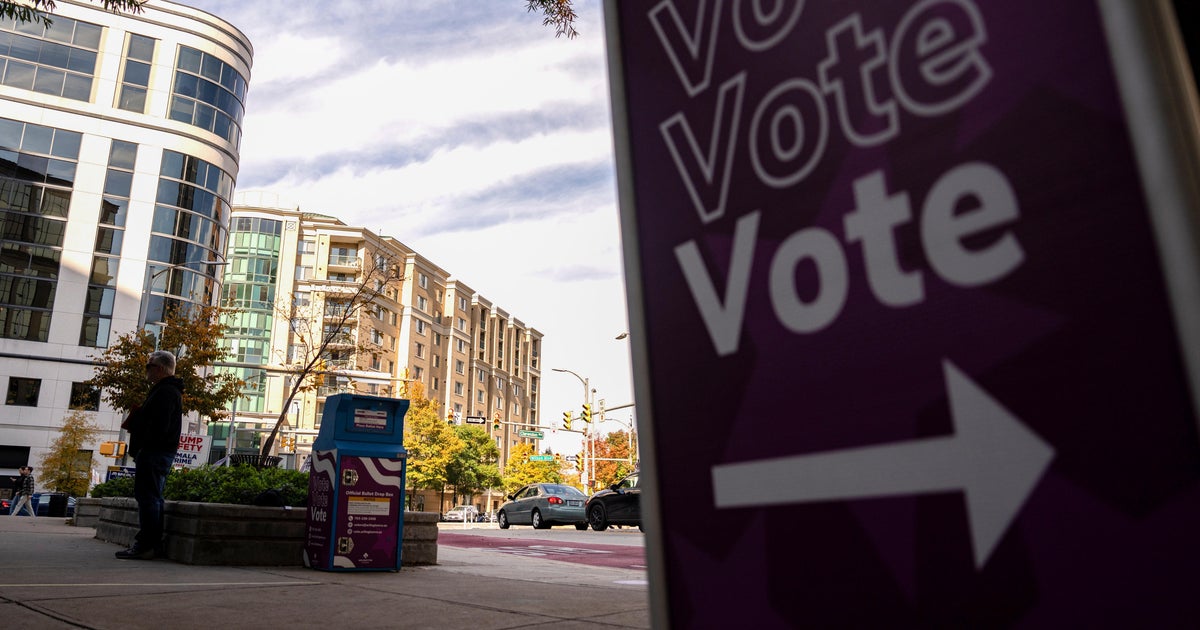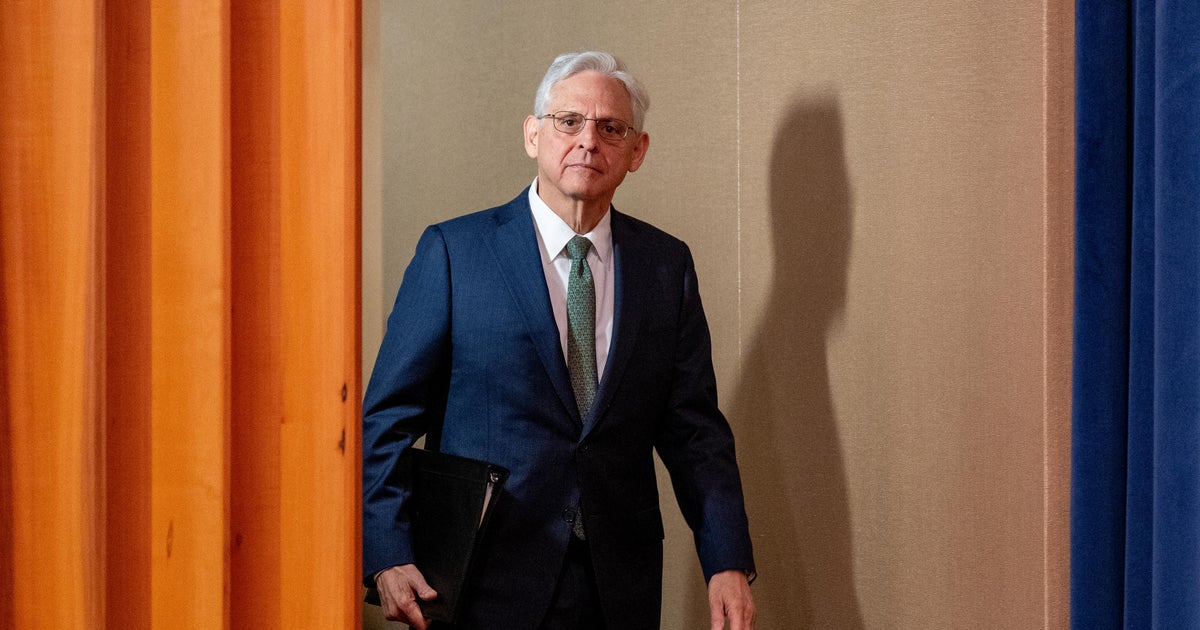Supreme Court wrestles with legal shield for Sackler family in Purdue Pharma bankruptcy plan
Washington — The Supreme Court on Monday grappled with whether to uphold a bankruptcy plan for Purdue Pharma over objections from the Biden administration about the broad legal protections it grants the Sackler family from civil lawsuits related to their role in the opioid epidemic.
At the heart of the dispute is a provision in the plan that releases the Sackler family and related entities from civil liability for the opioid epidemic, which was fueled in part by the Purdue-manufactured drug OxyContin. The Sacklers owned and operated Purdue during the height of the opioid crisis.
Purdue filed for Chapter 11 bankruptcy in 2019, and the Sacklers, who did not seek bankruptcy protection, agreed to contribute $6 billion for abatement of the opioid crisis in exchange for the legal shield.
The Biden administration and a small group of victims who object to the bankruptcy plan argued that these third-party releases are not allowed under the bankruptcy code. But at Monday's oral arguments in the case, known as Harrington v. Purdue Pharma L.P., several Supreme Court justices raised concerns about the ramifications of a decision unraveling Purdue's agreement, particularly for victims who stand to benefit from the settlement.
"We have 30 years of bankruptcy court practice that have approved releases of this kind in certain narrow circumstances," Justice Brett Kavanaugh told Curtis Gannon, a deputy solicitor general who argued on behalf of the Biden administration.
Kavanaugh and Justice Elena Kagan noted that the bankruptcy plan was approved overwhelmingly by victims of the opioid crisis and those who lost loved ones to overdoses. They filed lawsuits against Purdue before the company filed for bankruptcy protection and now may be eligible to receive between $3,500 and $48,000 in compensation through the settlement agreement.
"It's overwhelming, the support for this deal, and among people who have no love for the Sacklers, among people who think that the Sacklers are pretty much the worst people on Earth," Kagan said. "They've negotiated a deal which they think is the best that they can get."
Justice Clarence Thomas, too, questioned why the U.S. Trustee, an arm of the Justice Department that oversees the administration of bankruptcy cases and objected to Purdue's bankruptcy plan, can intervene and ask courts to reject an agreement backed by most victims.
"Virtually the vast majority or overwhelming majority of those who have claims are interested in having this resolved," he said, asking Gannon, "why is it that you're able to come in and undo something that has such overwhelming agreement?"
The Purdue Pharma bankruptcy
Purdue sought Chapter 11 bankruptcy protection in September 2019 after scores of states, local governments, Native American tribes and victims filed lawsuits against the company seeking damages arising from its manufacture and sale of OxyContin. Purdue separately pleaded guilty in 2007 to a felony count of misbranding OxyContin and has paid more than $600 million in fines and other costs.
As part of a settlement negotiated with claimants, the Sacklers agreed to contribute more than $4 billion across a decade — an amount that ultimately rose to $6 billion — to fund efforts to fight the opioid crisis. The settlement also includes $750 million to compensate victims, and requires millions of documents to be made public. Purdue would restructure itself as a public benefit company, with its profits used to make products that combat opioid addiction.
In exchange, the plan included the release that shields the Sacklers from civil lawsuits stemming from the opioid crisis. The family would also potentially be able to keep billions of dollars in revenue from Purdue that was distributed between 2008 and 2017, according to court filings. Gregory Garre, a lawyer who argued on behalf of Purdue, told the justices that 40% of that money went to taxes.
The bankruptcy plan was approved by 95% of victims. However, several states, Canadian municipalities and indigenous tribes, plus more than 2,600 individuals, voted against it because of the legal protections for the Sackler family, their affiliates and related entities.
A bankruptcy court in New York approved the plan in September 2021, though the states and other detractors challenged that approval in a federal district court in New York. Joined by the U.S. Trustee, the opponents focused on whether dissenters from federal bankruptcy agreements can be bound by releases that shield entities that have not declared bankruptcy themselves, like the Sacklers.
A federal district court said bankruptcy courts do not have the authority to approve such releases, and in December 2021 it rejected the plan.
Purdue and other plan proponents appealed to the U.S. Court of Appeals for the 2nd Circuit. While their case was pending, the District of Columbia and the eight states that had objected to the deal reached an agreement with Purdue and the Sacklers for them to boost their proposed contribution to the bankruptcy estate by $1.75 billion, bringing their total contributions to between $5.5 billion and $6 billion.
A divided 2nd Circuit panel reversed the district court's decision in May, after which the Justice Department asked the Supreme Court to review the appeals court's ruling and temporarily put the bankruptcy plan on hold. The high court agreed to pause the plan in August and said it would take the case.
Garre told the justices they would be taking "a wrecking ball" to the U.S. bankruptcy code if they find bankruptcy courts cannot approve releases. Pratik Shah, who argued on behalf of some of the victims backing the deal, warned that the plan will unravel without the legal protections for the Sacklers.
"There will be no viable path to any victim recovery," he said.
Division among the justices
During nearly two hours of arguments, the justices appeared split on whether the holdouts who refused to approve the deal should be bound by the release and therefore unable to pursue their own claims against the Sacklers.
Justice Neil Gorsuch repeatedly raised constitutional concerns over the inability of the plan's dissenters to hold the Sackler family accountable in civil court.
"We don't normally say that a nonconsenting party can have its claim for property eliminated in this fashion without consent or any process of court other than the procedure here," he told Garre. "This would defy what we do in class-action context, would raise serious due process concerns and 7th Amendment concerns. … You're normally entitled to a jury."
Several of the justices acknowledged that the Sacklers are benefitting from bankruptcy protection without having declared bankruptcy, after funneling billions of dollars in profits from Purdue.
"Most of the assets we're talking about were originally in the company, and that they actually took the assets from the company, which started the set of circumstances in which the company now doesn't have enough money to pay the creditors," Justice Ketanji Brown Jackson said.
Kagan noted the "fundamental bargain" in bankruptcy law, namely that the debtor receives a discharge when all assets are put "on the table" to be divided up among creditors.
"Everybody thinks the Sacklers didn't come anywhere close to doing that," she said. "And the question is why should they get the discharge that usually goes to a bankrupt person once they put all their assets on the table without having put all their assets on the table?"
Kagan added: "It would be a kind of extraordinary thing if we gave the power to basically subvert this basic bargain in bankruptcy law."
Justice Amy Coney Barrett questioned how future settlement negotiations would be impacted by a Supreme Court decision. Third-party releases are not uncommon in major Chapter 11 bankruptcies and were part of reorganization plans involving the Boy Scouts of America and Catholic Church after facing lawsuits alleging sexual abuse.
"Going forward, depriving bankruptcy courts of this tool, what will be the effect going forward in other cases like this?" she asked.
A decision from the Supreme Court is expected by the end of June.




